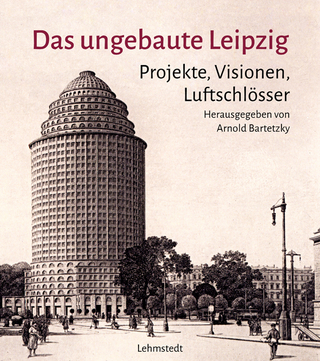
Quantifying Stone Age Mobility
Springer International Publishing (Verlag)
978-3-030-94367-7 (ISBN)
Chapters in the volume include case studies from across Europe and Asia. The editors' introduction addresses the current state of mobility discourse in archaeology. The chapters address questions related to parameters used to describe different factors of movement and examines correlations between parameters describing environmental diversity, demography, and the values representing spatial movement. This volume is of interest to students and researchers of mobility of human beings in the past.
Iwona Sobkowiak-Tabaka is a University Professor of Archeology at the Adam Mickiewicz University at Poznan, Poland. Her research focus on the issue of Late Palaeolithic communities from the North European Plain, especially on the relations humans - environment. She carried out two multidisciplinary projects, financed by National Science Centre-Poland, aimed on recognition of the lifeways Late Palaeolithic and Mesolithic hunter-gatherers in present-day Western Poland. She also took part in excavations in Sudan (Khartoum, Khor Shambat) and analyzed Mesolithic pottery of that region. Her ongoing research covers transformations and modifications of culture in prehistory.
Aleksandr Diachenko is a Senior Researcher at the Institute of Archaeology of the National Academy of Sciences of Ukraine, Kiev. His research interests cover archaeological method and theory, spatial analysis and mathematical simulations in archaeology, and Eneolithic of Southeastern Europe. His research on Cucuteni-Tripolye cultural complex focuses on settlement systems, mobility, including migratory behaviour, and culture change. Most recently Aleksandr Diachenko in collaboration with Iwona Sobkowiak-Tabaka develops mathematical approaches to the dynamics of prehistoric culture.
Andrzej Wisniewski is a University Professor of Archeology at the University of Wroclaw, Poland. His research interests that encompass settlement strategies and technology of the Middle and Late Palaeolithic of Central Europe, implementation of statistical methods in archaeology as well as understanding of site formation processes, has resulted in numerous publications. He is a supporter of the multi-regional concept of the development of advanced lithic technologies in the Middle Palaeolithic. He is the project leader of excavations at Sowin, Haller Avenue in Wroclaw and Pietraszyn 49a (Poland). His main current research concerns the period of the disappearance of archaic people and the beginnings of the anatomically modern humans.
Introduction; Iwona Sobkowiak-Tabaka, Aleksandr Diachenko and Andrzej Wisniewski.- Part 1. Wide-scale mobility: Environmental contexts and cross-cultural trends.- Chapter 1. Deconstructing Neanderthals mobility; Andrea Picin.- Chapter 2. Reading the past mobility of Late Palaeolithic hunter-gatherers. The case study from Sowin complex, South-Western Poland; Andrzej Wisniewski, Cyprian Kozyra and Marcin Chlon.- Chapter 3. Obsidian Transportation from Hokkaido to Honshu Island across the Tsugaru Strait in the Late Upper Paleolithic; Yoshitaka Kanomata, Yosuke Aoki, Ryosuke Kumagai, Shigeki Sasaki and Kaoru Akoshima.- Part 2. Seasonal mobility of Palaeolithic and Mesolithic hunter-gatherers: In a search for proxies.- Chapter 4. Approaching Late Palaeolithic mobility on the North European Plain; Iwona Sobkowiak-Tabaka and Aleksandr Diachenko.- Chapter 5. A house near the river. Mesolithic land use and a rare dwelling structure from the Netherlands; Alex Muller.- Chapter 6. Measuring Mesolithic mobility: the case of pit hearths in the Netherlands; Marcel Niekus.- Chapter 7. Spatial analysis of objects attributed to the Mezhyrichian Epigravettian culture: A model of mobility; Pavlo Shydlovskyi, Oleksii Tsvirkun and Stefan Pean.- Part 3. Migration, niche construction, utilitarian and non-utilitarian factors of mobility.- Chapter 8. Moving on: dispersal and niche construction; Marc Vander Linden.- Chapter 9. Perception and migration: Prehistoric studies; Ezra B.W. Zubrow, Jay Leavitt and Aleksandr Diachenko.- Chapter 10. SARP revisited: reconstructing population trends through large-scale analysis of archaeological settlement data; Tom Harper.
| Erscheinungsdatum | 04.06.2022 |
|---|---|
| Reihe/Serie | Quantitative Archaeology and Archaeological Modelling |
| Zusatzinfo | VIII, 295 p. 1 illus. |
| Verlagsort | Cham |
| Sprache | englisch |
| Maße | 155 x 235 mm |
| Gewicht | 612 g |
| Themenwelt | Geisteswissenschaften ► Geschichte |
| Schlagworte | analysis of archaeological settlement data • dispersal and niche construction • Environmental contexts of mobility • Measuring Mesolithic mobility • mobility of hunter-gatherers • Neanderthals mobility • Niche construction • non-utilitarian factors of mobility • Obsidian Transportation • seasonal mobility • Seasonal mobility of hunter-gatherers • Seasonal mobility of Mesolithic hunter-gatherers • Seasonal mobility of Palaeolithic hunter-gatherers • Spatial analysis of Mezhyrichian Epigravettian objects • Spatial distribution • utilitarian mobility • Wide-scale mobility |
| ISBN-10 | 3-030-94367-4 / 3030943674 |
| ISBN-13 | 978-3-030-94367-7 / 9783030943677 |
| Zustand | Neuware |
| Informationen gemäß Produktsicherheitsverordnung (GPSR) | |
| Haben Sie eine Frage zum Produkt? |
aus dem Bereich


